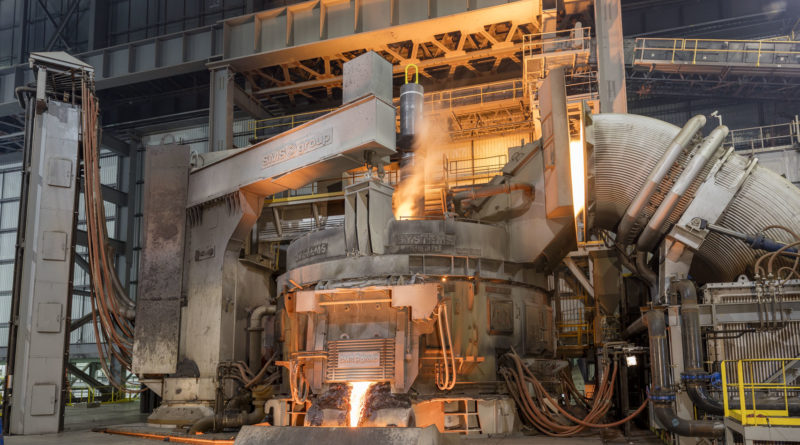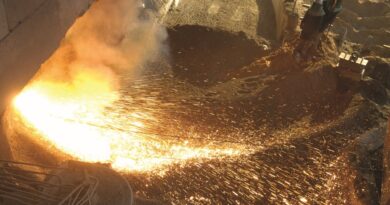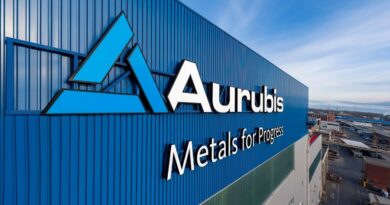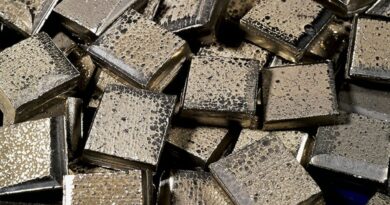EAF steelmaking can’t address decarbonisation challenge alone
Steel is manufactured by two main process routes (1) the integrated steelmaking process featuring the blast furnace/basic oxygen furnace (BF/BOF), where iron ore is the major source of iron units; and (2) electric steelmaking based on the electric arc furnace (EAF), where steel scrap or direct reduced iron (DRI) are the major iron feedstock materials.
Integrated steelmaking represents 72% of global steel production. This varies by region, with factors such as scrap availability and fuel costs playing important roles in determining BF/BOF competitiveness versus the EAF process. In regions where scrap and/or natural gas are available at affordable prices, EAF steelmaking tends to have a higher share of steel production, e.g. in North America or the Middle East and North Africa.
In the integrated steelmaking route, iron ore containing ferrous oxides is converted to metallic iron inside the blast furnace via a chemical process called reduction. Coal in the form of coke and pulverised coal act as the active agents or reductants that strip away oxygen from the iron ore to yield metallic iron.
With temperatures inside the blast furnace reaching over 2000°C, the resulting metallic iron melts and the liquid hot metal is ‘cast’ from the furnace and transported to the basic oxygen furnace.
Here, the high-carbon hot metal is refined using oxygen and fluxes (e.g. limestone, dolomite), forming a slag that removes unwanted impurities including carbon, silicon and phosphorus to yield liquid steel. This process produces high volumes of CO2, contributing significantly to global warming.
Electric steelmaking differs from the integrated route in that the EAF feedstock, steel scrap or DRI, is already reduced and in its metallic form. The metallic charge only needs to be melted to convert the scrap/DRI into liquid steel. As a result the EAF process is environmentally friendly, with extremely low CO2 emissions, provided clean electricity is used in the process.
So why don’t steelmakers simply increase their share of EAF steelmaking to address the decarbonisation challenge?
The answer to this is that scrap and DRI are in finite supply: and that supply falls far short of global needs. Experts anticipate that all major regions will increase their scrap usage over time, but the pace of change will be determined, principally, by scrap availability.
That in turn depends largely on the availability of end-of-life/obsolete steel stock. Up to 2050 at least, there is simply not enough scrap to go around, with the global scrap-to-steel ratio likely to remain below 50% in the central case.
As a result, BF/BOF steelmaking, which relies on iron ore and metallurgical coal, will continue to be the dominant processing route for the manufacture of steel.
With impurities such as silica, alumina and phosphorus strongly impacting the efficiency and competitiveness of the EAF process, DRI production must use the very highest quality iron ore, with average iron content in the range of 67%.
BHP says such deposits are scarce. Without development in the DRI/EAF process that enables it to run efficiently with medium-to-high-grade ores, the very demanding feedstock requirement will limit its competitiveness.




